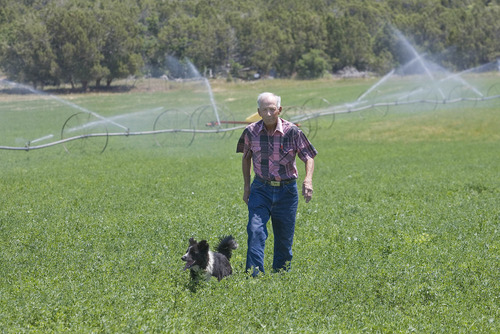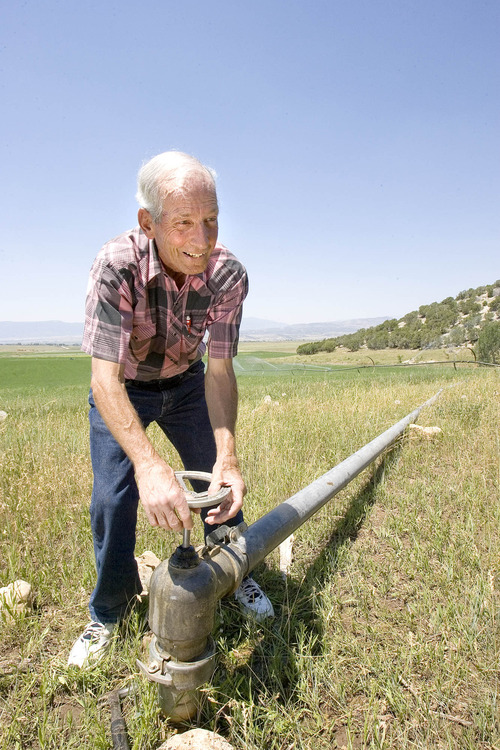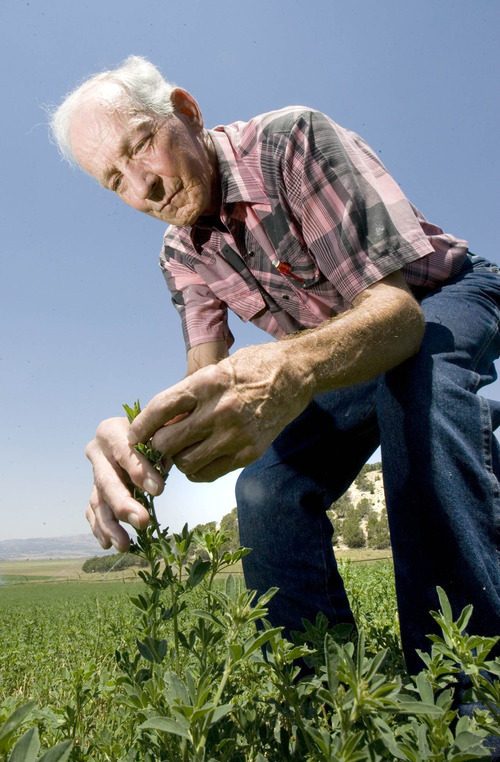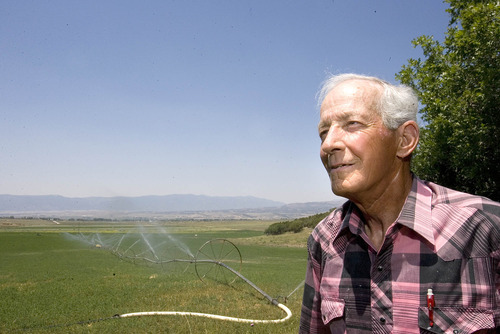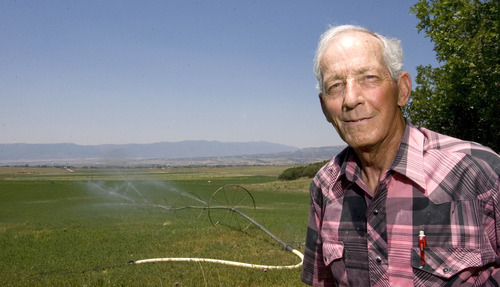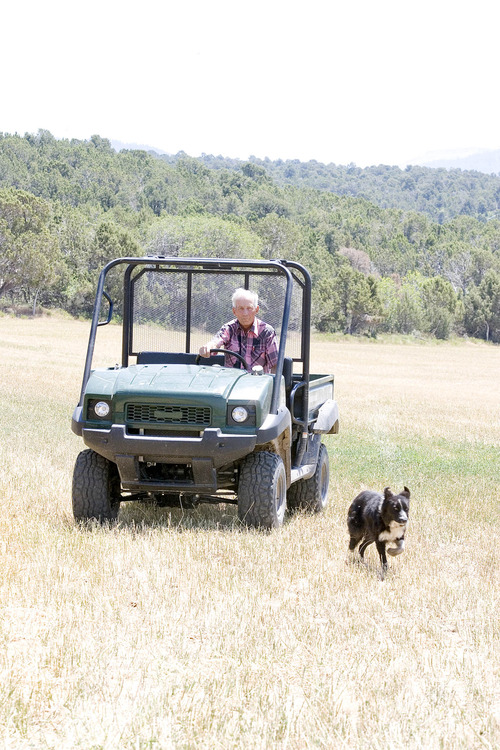This is an archived article that was published on sltrib.com in 2013, and information in the article may be outdated. It is provided only for personal research purposes and may not be reprinted.
Richfield • Just a small percentage of Utah's population is in agriculture, but that sector of the economy controls about 80 percent of the state's stressed water resources while the number of urban faucets continues growing.
And that scares people like David Pace, who considers the word saving a "misnomer" when applied to water. That's because when farmers reduce water use, others will want to see the savings in a lake, Pace told a small crowd Tuesday night at the Sevier County Fairgrounds. Water conservation should be stepped up to supply urban growth, but so should dam building, he said.
"We will always need more reservoirs. Putting them off makes them more expensive," said Pace, a resource coordinator with the Utah Association of Conservation Districts. "Conservation is like eating. If you don't do it regular, you're not doing it right."
About a dozen people, mostly from rural central Utah counties, stepped to the mic to share ideas with a team of water experts assembled by Gov. Gary Herbert. The group is touring the state for the next few weeks, hosting eight town-hall meetings to gather public input for a 50-year water strategy. Besides Richfield, another already took place in Layton.
"We are here to listen," said Alan Matheson, Herbert's environmental policy adviser who is hosting the gatherings that resume Tuesday in Price.
The first thing Mormon pioneers did when they arrived in new places to settle was build obstructions on creeks to divert water onto their second task, planted fields.
Coming later were schools, churches, roads, cities and a diverse economy, but little of it was possible without the network of water projects developed over the decades.
State officials now say this infrastructure is not sufficient for meeting future needs, so planning, new projects and perhaps some sacrifices are in order. Many environmentalists, however, feel Utah can meet its water needs through smarter management of existing resources.
"Water is such a big part of our lives and we take it for granted, I believe," Matheson said in opening Tuesday's meeting in Richfield. "By 2060 the population of our state may double [to more than 5 million]. What does it mean for agriculture, for recreation, for the ability of our cities to grow and economic development?"
Many at Tuesday's meeting were concerned this growth may come by sucking the lifeblood out of rural communities through interbasin water transfers.
"The water needs to stay in the basin where it is and be developed there. We need to protect our heritage," said Millard County Commissioner Daron Smith, addressing groundwater.
Others argued Utah's water resources should be developed for the exclusive benefit of Utah residents and not leased to other states or energy developers, such as a proposed nuclear power plant near Green River.
Sarah Straw denounced tar sands development, an "unconventional" energy resource supported by the Herbert administration. She said it could degrade Utah's landscape, deplete water and siphon the profits to Canada.
She gestured to her granddaughters, ages 5 and 8, holding a sign that read, "Please save some water for us."
"They don't inherit it from us, we borrow it from them," Straw said.
Dennis Strong, who runs the Utah Division of Water Resources, was pleased with the civility of Tuesday's meeting and speakers' thoughtfulness.
"It's not surprising there was a focus on agriculture. We'll see a different focus as we move around the state," Strong said. "People are thinking about water. Thinking about it environmentally. How to improve conservation and stretch our water supplies."
Under current planning, about 60 percent of future water will come from conservation, he said. Another 10 percent from improved management, 10 percent from conversion of agricultural lands, and 20 percent from new projects tapping the Bear and Colorado rivers.
Yet not everyone was enthused about the governor's planning efforts.
"The biggest thing that scares me is when a bunch of state people come in and say we are here to help you," said Dale Roper, president of the Melville Irrigation Co. in Delta. "Someone is going to have to pay."
Roper and other farmers who rely on the Sevier said they have already invested heavily in ditch upgrades, grading fields, pivots and sprinklers. More dams on that system make little sense because every drop is allocated so that new diversions may mean taking water from a downstream user.
This is a tough reality for upstream irrigators like Ken Palmer in Sanpete County, where the San Pitch River is little more than a trickle. Farmers around Mt. Pleasant hope to build a small dam in the Price River headwaters but have met tough resistance from their Carbon County neighbors.
"We absolutely need storage on the north end of the valley, and that can only be provided by a dam," said Sanpete County Commissioner Claudia Jarrett.
bmaffly@sltrib.com Utah's water future
Gov. Gary Herbert is crafting a 50-year strategy for managing and developing the state's water resources. His administration is gathering ideas from the public at meetings around the state and will present findings in six white papers at an Oct. 30 "water summit." Upcoming meetings are:
July 16 • Price City Hall, Room 207, 185 E. Main St.
July 18 • Provo High School, Auditorium, 1125 N. University Ave.
July 25 • Dixie State University, Dunford Auditorium, 225 S. 700 East, St. George
Aug. 6 • Vernal City Council Chambers, 374 E. Main St.
Aug. 13 • Department of Natural Resources, Auditorium, 1594 W. North Temple, Salt Lake City
Aug. 15 • Mount Logan Middle School, 875 N. 200 East, Logan
Oct. 30 • Water Summit in Provo


